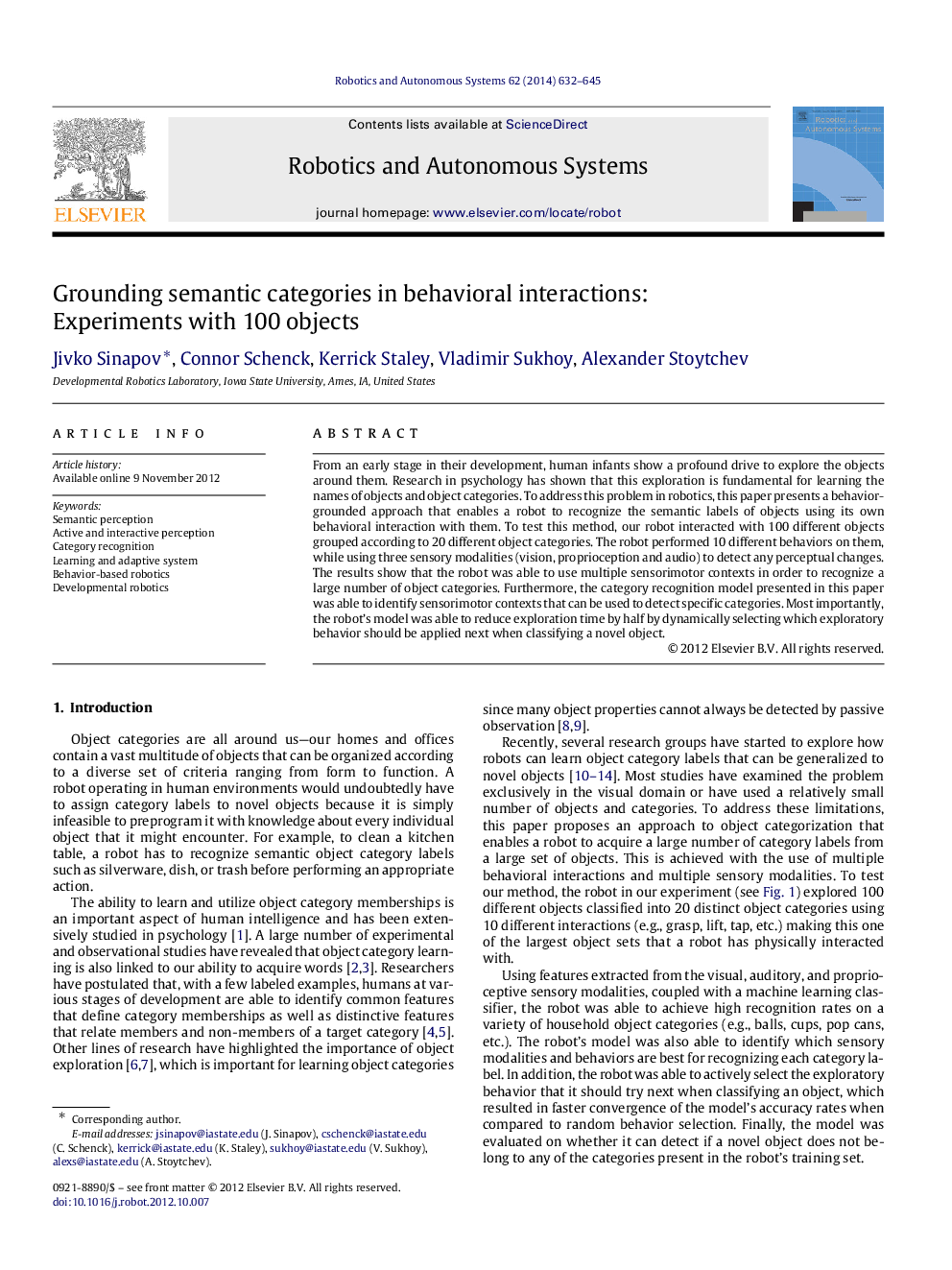| کد مقاله | کد نشریه | سال انتشار | مقاله انگلیسی | نسخه تمام متن |
|---|---|---|---|---|
| 411305 | 679537 | 2014 | 14 صفحه PDF | دانلود رایگان |
From an early stage in their development, human infants show a profound drive to explore the objects around them. Research in psychology has shown that this exploration is fundamental for learning the names of objects and object categories. To address this problem in robotics, this paper presents a behavior-grounded approach that enables a robot to recognize the semantic labels of objects using its own behavioral interaction with them. To test this method, our robot interacted with 100 different objects grouped according to 20 different object categories. The robot performed 10 different behaviors on them, while using three sensory modalities (vision, proprioception and audio) to detect any perceptual changes. The results show that the robot was able to use multiple sensorimotor contexts in order to recognize a large number of object categories. Furthermore, the category recognition model presented in this paper was able to identify sensorimotor contexts that can be used to detect specific categories. Most importantly, the robot’s model was able to reduce exploration time by half by dynamically selecting which exploratory behavior should be applied next when classifying a novel object.
► We performed a large-scale object categorization experiment with 100 objects.
► The robot’s category recognition model learned to identify 20 semantic category labels.
► The robot used a diverse set of exploratory behaviors and sensory modalities to explore the objects.
► Active behavior selection reduced exploration time by half when classifying a novel object.
Journal: Robotics and Autonomous Systems - Volume 62, Issue 5, May 2014, Pages 632–645
